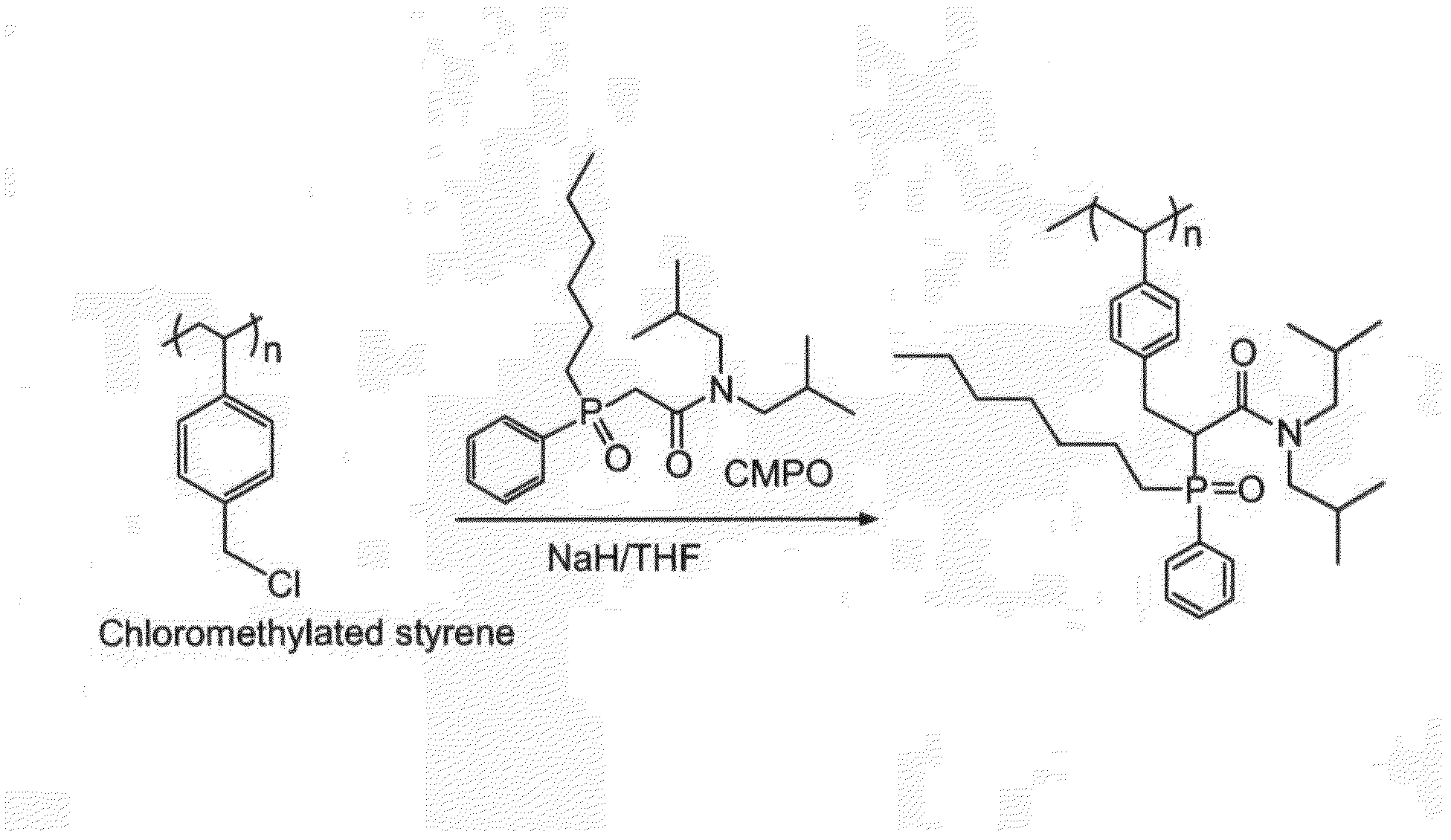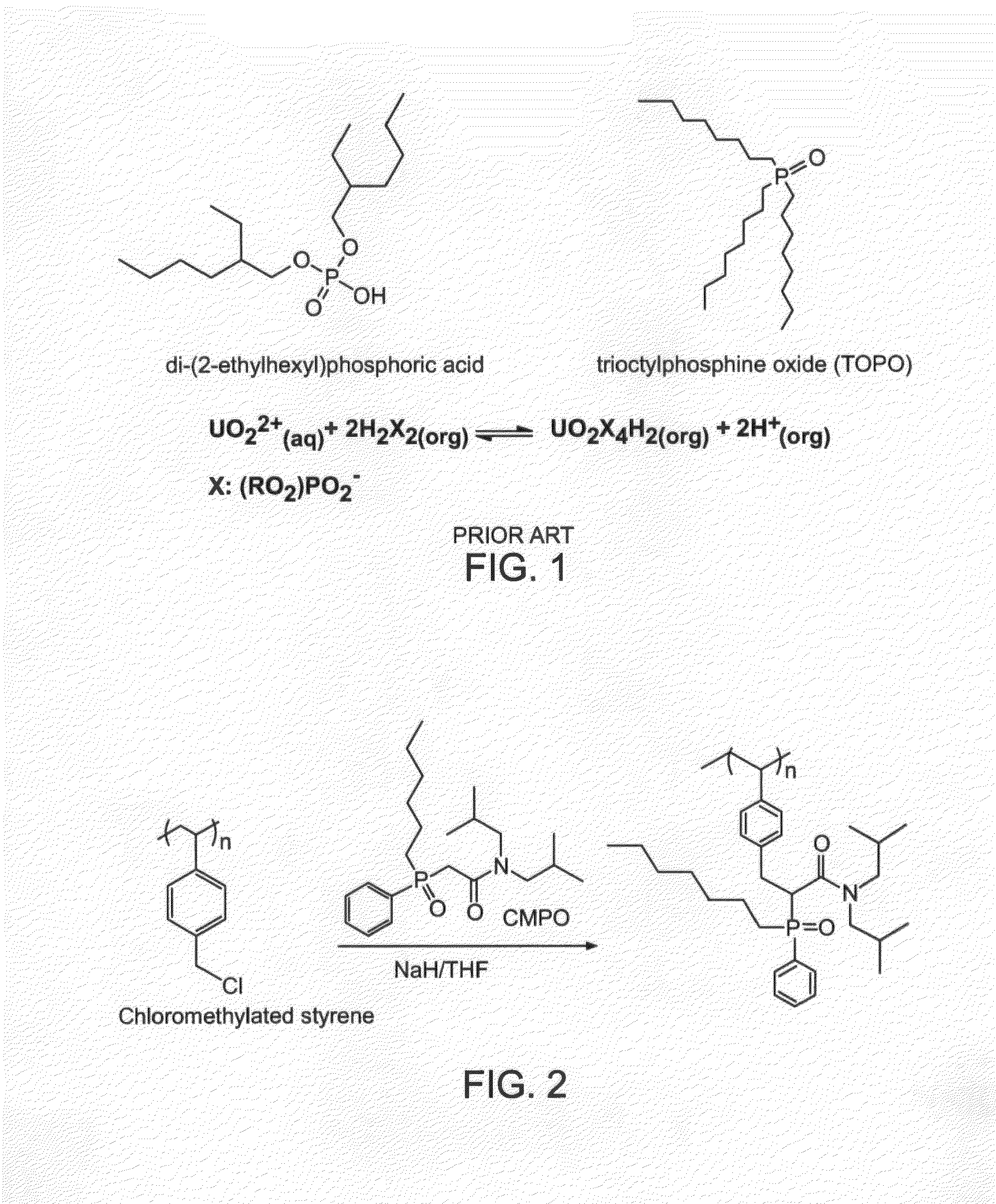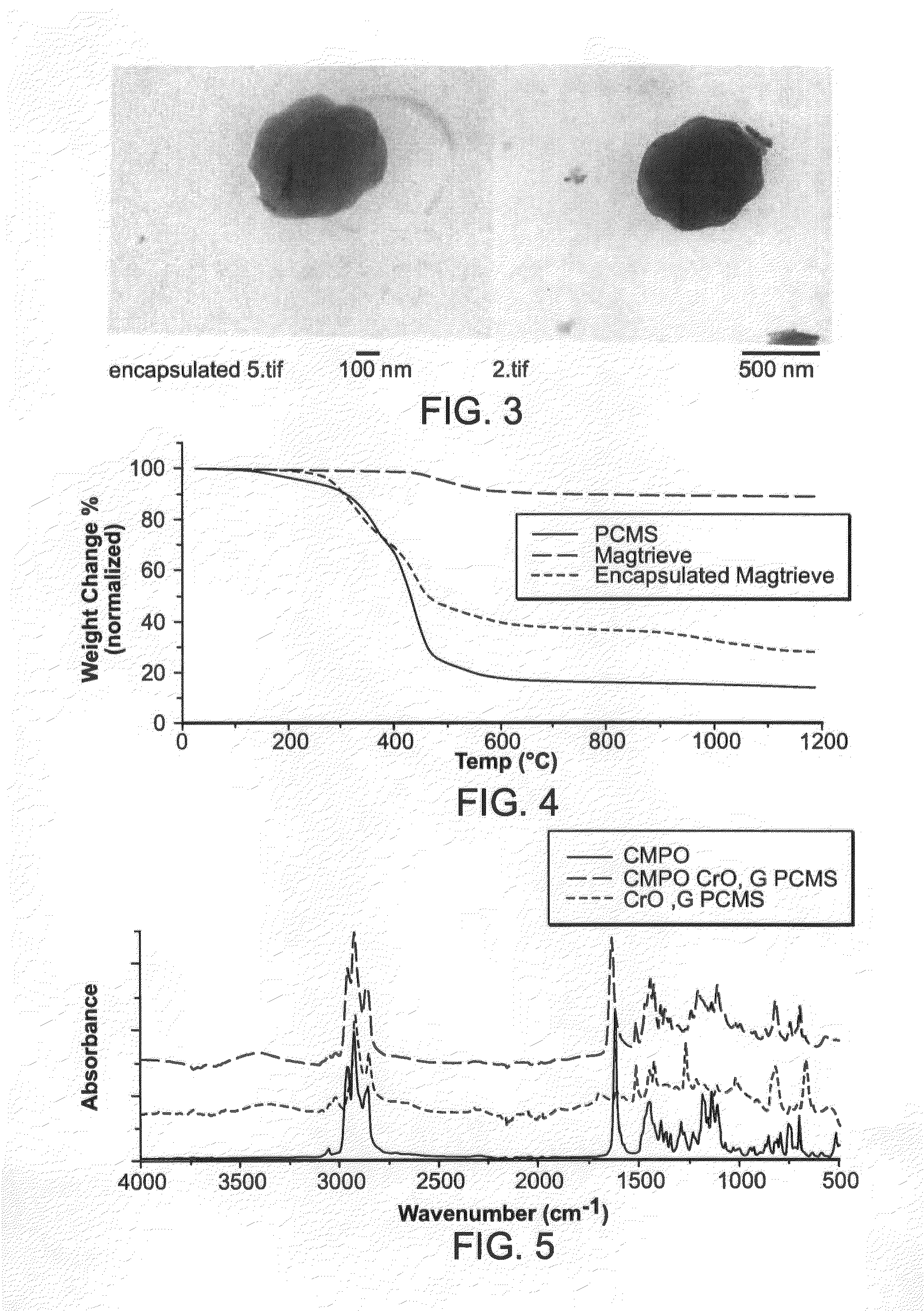Particulate Materials for Uranium Extraction and Related Processes
- Summary
- Abstract
- Description
- Claims
- Application Information
AI Technical Summary
Benefits of technology
Problems solved by technology
Method used
Image
Examples
example 1
Core-Shell Particle Synthesis
[0023]All chemicals were obtained from Sigma-Aldrich Chemical Co. and were of highest purity available. Magtrieve™ magnetic particles (chromium dioxide, CrO2 distributed by Sigma-Aldrich; supplier, DuPont Product® Reg. trademark of E.I. du Pont de Nemours & Co., Inc.) (0.45 g) were added to a mixture of oleic acid (0.2 mL) and hexadecane (0.4 mL), and sonicated for 5 min. The oleic acid-coated chromium dioxide, chloromethylstyrene (6 mL) and divinylbenzene (0.2 mL) were placed in a 250 ml three-necked round-bottom flask equipped with mechanical stirrer, condenser and nitrogen inlet. The flask was purged with nitrogen before reagents were added. All manipulations and the reaction were carried out under nitrogen flow. The mixture was sonicated for 30 s to obtain homogenous dispersion. To the resultant dispersion a solution of free-radical initiator 2,2′-azobis(2-methylpropionamidine)dihydrochloride (0.2 g) in deionized water (100 mL) was added and the mixt...
example 2
Grafting of Core-Shell Particles With Selective Extractant (FIG. 2)
[0024]n-Octyl(phenyl)-N,N-diisobutylcarbamoylmethylphosphine (3.06 g) was dissolved in 39 mL of tetrahydrofuran in a 100-mL two-necked round bottom flask equipped with a mechanical stirrer and nitrogen inlet. Magnetic latex particles from Example 1 (2.0) g were added to this solution and dispersed with stirring and sonication. Sodium hydride (0.18 g) was added to the dispersion and the reaction was allowed to proceed for 1 hr, with rapid stirring, under nitrogen. The grafted particles were magnetically separated and washed with ether, ethanol, water, ethanol, ether and dried. Total yield of CMPO-grafted particles was 1.53 g.
example 3
Properties of the Solid Extractant
[0025]The synthesized particles were analyzed using transmission electron microscopy (FIG. 3), thermogravimetric analysis (FIG. 4), FTIR (FIG. 5), and SQUID (FIG. 6). The nanoparticles were approximately 500 nm in diameter, with needle-like chromium dioxide particles embedded inside a polymer matrix.
[0026]Attachment of CMPO did not have any effect on the morphology of the nanoparticles. TGA showed that chromium dioxide (CrO2) decomposes to CR2O3 in the temperature range around 500° C., with ˜9% decrease in weight. The chloromethylated polystyrene (PCMS) decomposes above 300° C., losing about 85% of weight. PCMS-encapsulated chromium dioxide also decomposes above 300° C., but losing only 72% of weight, as expected due to presence of CrO2 particle, which does not lose a significant fraction of its weight. From the difference in weight change the fraction of chromium dioxide in the core-shell particles was calculated and is about 9% w / w.
[0027]The attac...
PUM
| Property | Measurement | Unit |
|---|---|---|
| Particle size | aaaaa | aaaaa |
| Acidity | aaaaa | aaaaa |
| Magnetization | aaaaa | aaaaa |
Abstract
Description
Claims
Application Information
 Login to View More
Login to View More - R&D
- Intellectual Property
- Life Sciences
- Materials
- Tech Scout
- Unparalleled Data Quality
- Higher Quality Content
- 60% Fewer Hallucinations
Browse by: Latest US Patents, China's latest patents, Technical Efficacy Thesaurus, Application Domain, Technology Topic, Popular Technical Reports.
© 2025 PatSnap. All rights reserved.Legal|Privacy policy|Modern Slavery Act Transparency Statement|Sitemap|About US| Contact US: help@patsnap.com



